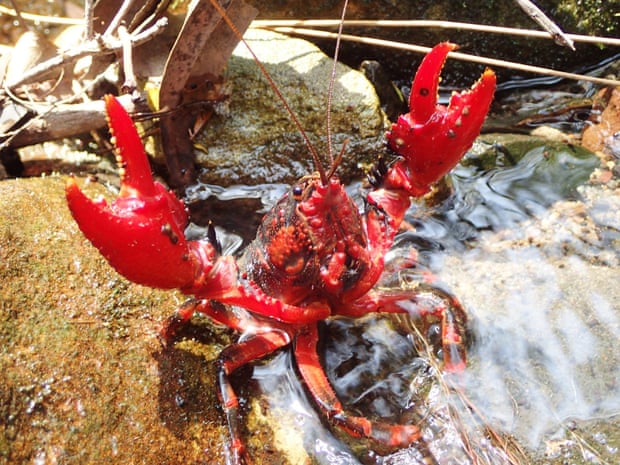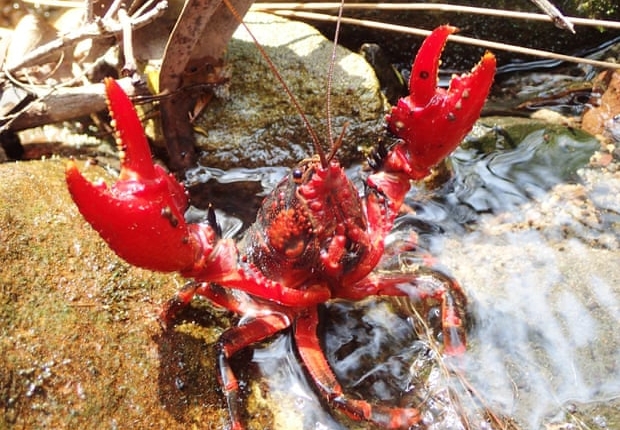Half of all spiny crayfish species in Australia were impacted by the black summer bushfires, and remaining populations of the animals are at risk from natural disasters and climate change. A scientific collection of spiny crayfish samples, gathered over 20 years ago from remote areas in northeastern New South Wales and southern Queensland, has been crucial for scientists to study and conserve these animals. The collection is particularly important for distinguishing new species from known ones and making accurate distribution maps of the animals. The donation of the collection to the Australian Museum has enabled taxonomists to preserve specimens properly for the future. The survey work that followed the bushfires led to the discovery of 20 new species of spiny crayfish, in addition to the 54 known species, many of which are endangered. The spiny crayfish collection is a valuable biological resource, helping scientists to understand and conserve the animals that are highly susceptible to climate change.

The recent floods that ravaged Lismore have brought to light the importance of preserving marine life. A group of ecologists were able to retrieve a collection of spiny crayfish, which was deemed a valuable biological resource, to understand and conserve the animals. The samples were collected over 20 years ago from north-eastern New South Wales and southern Queensland by freshwater ecologist Dr Jason Coughran. These spectacular crustaceans are not only visually striking, but also have thorny armour, protecting them from predators. However, they are susceptible to habitat changes such as land clearing and natural disasters.
The spiny crayfish require pristine water to survive, which is different from their inland counterpart, the yabby, which can tolerate poor water conditions. The crayfish can only be found in specific regions, with each river catchment having its own species. Professor Nigel Andrew, the chair of science at Southern Cross University, stated that this biological resource is helping scientists understand and conserve these animals, which are highly susceptible to climate change.
The transfer of the collection from Lismore to the Australian Museum in Sydney was not without its challenges. The plan to collect the samples had been in the works for years, but the unprecedented floods in the region delayed the transfer. The museum team had to assess the risk to the collection and the flood zone before being able to retrieve the samples. The spiny crayfish collection was finally retrieved nearly two months later and safely transported to Sydney. Prof Shane Ahyong, the head of marine invertebrates at the Australian Museum, noted that the site became inaccessible again just one week later due to more flooding.
The transfer of the spiny crayfish collection highlights the importance of preserving marine life, particularly in the face of natural disasters and climate change. The collection provides invaluable insight into these animals, allowing researchers to better understand and conserve them.
The black summer bushfires in Australia have had a severe impact on spiny crayfish species, with half of all known species affected. The remaining populations of these animals are at risk from further natural disasters and climate change. Scientists are relying on a scientific collection of spiny crayfish gathered in remote and hard-to-reach areas to make accurate distribution maps of the animals as they continue to assess the effects of the fires. The collection is also crucial for distinguishing new species from known species, allowing scientists to study their anatomy precisely. The donation of this collection to the Australian Museum ensures the proper preservation of specimens for the future.
The survey work conducted after the bushfires led to the discovery of 20 new species of spiny crayfish, in addition to the 54 known species. Many of these species are endangered. The reference samples in the scientific collection are essential for scientists to increase the accuracy of their work.
Erich Wittstock, a laboratory team leader at Southern Cross University, notes that without the donation of the collection to the Australian Museum, it would have been lost. The collection enables taxonomists to properly preserve specimens for the future.
The impact of the black summer bushfires highlights the importance of preserving endangered species, particularly in the face of natural disasters and climate change. The scientific collection of spiny crayfish provides a crucial resource for scientists to study and conserve these animals, ensuring their survival for future generations.
Don’t miss interesting posts on Famousbio









